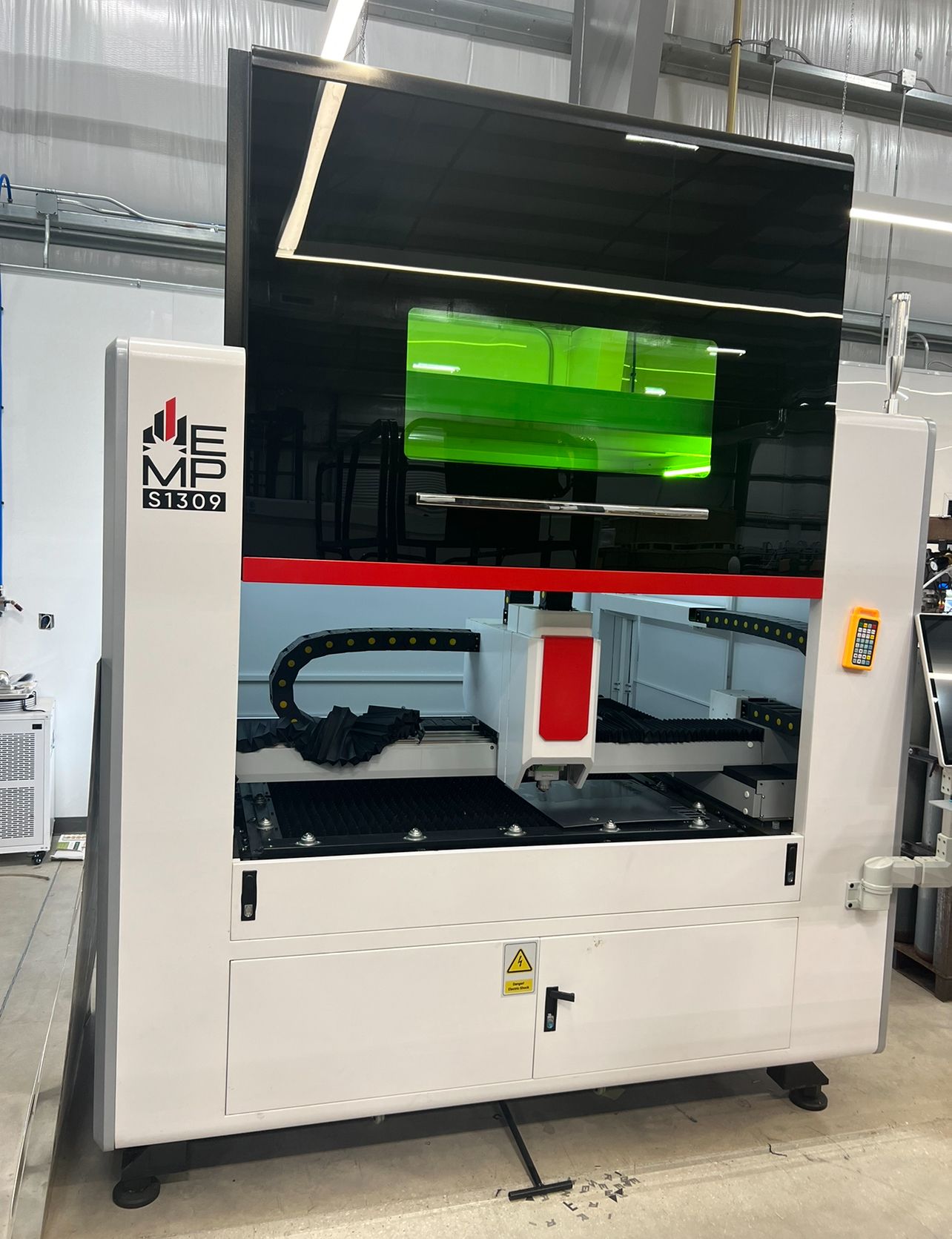Plasma vs. Fiber Laser Cutting
GK
Plasma vs. Fiber Laser Cutting
Plasma cutters had their moment—like Blockbuster and fax machines. But in metal cutting, fiber lasers deliver cleaner cuts, faster speeds, and fewer regrets. Has the Torch Finally Been Passed?
Now before you get out your pitchforks (or plasma torches), let’s be fair. Plasma cutting still has a place — it’s fast, it’s cheap, and it doesn’t care if your shop floor looks like a gravel pit. But in terms of accuracy, finesse, and modern manufacturing? Plasma is swinging a sledgehammer in a world that now uses scalpels. The problem has been access to demonstartions and ability it inspect the machines, before purchase. That is changing.
So Why Go Fiber? Here is a brand Netural Video!
Here’s the cold, hard, laser-sharp truth:
1. Precision That Makes Plasma Look Like a Drunk Doodle
Fiber lasers can cut with tolerances down to hundredths of a millimeter. Plasma? You’re lucky if your kerf doesn't wander off like a toddler on sugar. If your work involves tight tolerances — signs, enclosures, parts that actually fit — fiber is the adult in the room.
2. No Post-Cut Cleanup Party
Plasma leaves slag. Fiber doesn’t. If your idea of fun is grinding off dross and cleaning up edges just to make your parts usable, by all means — keep the plasma. But fiber laser cuts are so clean, they go from table to finish without the angle grinder drama. Cleaning is labor and labor is expensive. I believe the labor saving justifies any increased cost.
3. Faster Than You Think, Especially on Thin Material
Fiber lasers are insanely fast on sheet metal and thinner stock — especially stainless and aluminum. Plasma has to slow down to keep from melting everything into a Jackson Pollock puddle. Fiber? It zips through with no heat distortion and no “oops I cut into my fixture again” moments. About right now I bet you are thinking about increased work from client who need more percision, to pay for the change in technology.
4. Far Less Heat Affected Zone (HAZ)
With plasma, you’re essentially throwing a fireball at your metal. With fiber? It’s a concentrated beam of light. That means minimal warping, less discoloration, and better material integrity — which matters if your part has to survive more than five minutes in the real world.
5. Cleaner Cuts on Reflective Metals
Aluminum, brass, copper — plasma can handle them, sure… if you don’t mind smoking half your shop. Fiber lasers (especially high-power MOPA systems) handle reflective metals without the drama, the arcs, or the “why is my shop now on fire?” moments.
But… “Aren’t All Fiber Lasers the Same?”
Short answer: No. Longer answer: Definitely not.
Here’s where it gets interesting. Most large fiber laser systems come out of China. And while there are some solid manufacturers, there are also plenty that ship machines like they’re IKEA furniture — just add tools, missing manuals, and a prayer.
And if you do find a model you like? Good luck getting someone to demo it. Unless you’ve got a passport, you’re not seeing one in person anytime soon.
Enter EMP Laser in Melbourne, Florida
This is where things start to make sense. EMP Laser did what most companies wouldn’t: They built a showroom. A real, physical location where you can actually see, touch, and test large-format fiber lasers — no sales pitch required.

You don’t need to play email tag with a sales rep in another country. You can book and appointment go to one of two facilities, ask questions, and get real answers from real people. The same people you will have contact with with you need help with your machine.
This is a short video of the EMP Facilty I did while on a tour. If there is another company like this in the United States , let me know I will go visit them but at this point I think this firm is unique.
A Quick Disclosure — Because That Matters
I am an affiliate partner with Aeon Laser, which is distributed by EMP Laser. However, I have no affiliate relationship, commission, or incentive tied to the EMP-branded fiber machines themselves.
This article isn’t about pushing one brand — it’s about helping people make smarter buying decisions. If I recommend something, it’s because I’ve seen it, used it, or trust the team behind it — not because someone offered a payout.
The Verdict: Plasma Had Its Time — But Fiber is the Future
Unless you’re cutting inch-thick steel plate in a scrapyard, there’s very little reason to stick with plasma in 2025. The cost of entry on fiber has come down, the capabilities are unmatched, and with companies like EMP Laser making these machines available in the U.S. — it’s no longer a mystery box from overseas.
So if you’re still asking, “Should I get a plasma cutter or a fiber laser?” — the real question might be: Do you want to work harder, or smarter?
Thank you to the Engineers and Technitions at EMP LASER for allowing me access to their facility for reseach and testing. here is a courtsey Link to them.